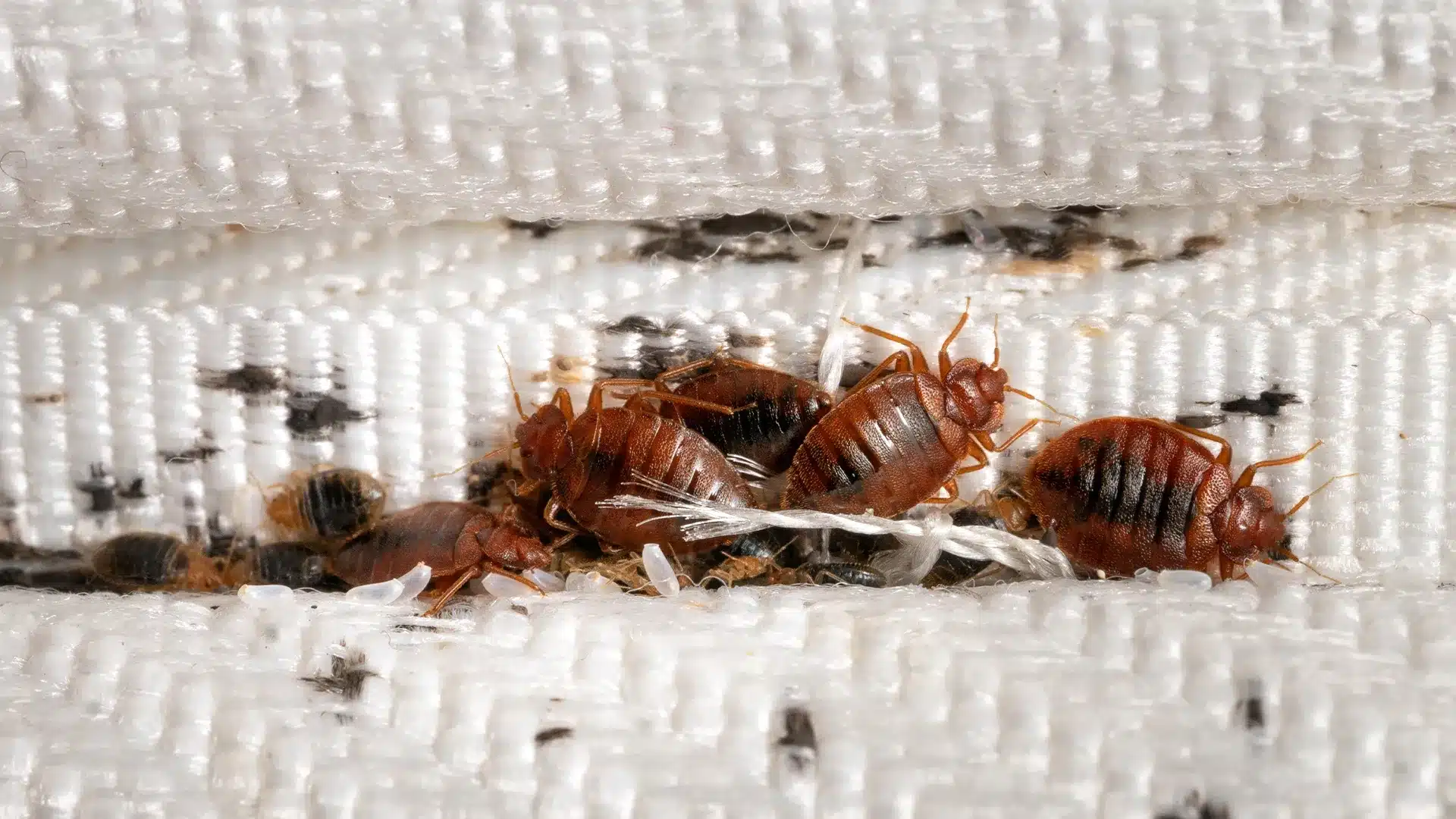Cost Effective Bed Bug Exterminator Near Me: DC Heat Treatment Specialists
Cost Effective Bed Bug Exterminator Near Me: DC Heat Treatment Specialists
Blog Article
Exploring the Scientific Research Behind Bed Bug Warmth Treatments as a Lasting Bug Management Approach
In the realm of parasite administration, the quest for sustainable and reliable services continues to be a constant search. One such technique that has actually acquired grip in recent years is the usage of heat treatments to fight bed bug problems. By taking advantage of the scientific research behind thermal death factors for these relentless bugs, heat treatments use a promising option to typical chemical-based methods. The details of just how warm successfully eliminates bed bugs and the wider effects for sustainable pest management methods make this a subject worth discovering further.
Bed Bug Warmth Therapy Refine

Thermal Fatality Point for Bed Insects
Exposing bed pests to elevated temperature levels beyond their thermal resistance variety is essential for attaining effective obliteration in warm therapy processes. The thermal fatality factor for bed pests describes the temperature at which these insects can not endure. Research study suggests that bed bugs start to die when exposed to temperature levels over 113 ° F(45 ° C) for a sustained duration. As the temperature level boosts, so does the death price of bed pests. At around 118 ° F(48 ° C ), bed pests begin to die swiftly, with a death rate of virtually 99% within mins of exposure. This shows the sensitivity of bed insects to high temperature levels and highlights the effectiveness of warm therapies in eradicating invasions. By getting to and maintaining temperatures over the thermal fatality point for bed insects, parasite monitoring professionals can make certain extensive elimination of bed pest populaces, including hard-to-reach areas where chemical treatments may be much less reliable. Understanding the thermal death point for bed insects is essential for executing successful warm therapy approaches and attaining lasting pest management outcomes.
Benefits of Warm Treatments
Having developed the essential thermal death point for bed pests, it is vital to now discover the considerable advantages that warmth therapies offer in properly getting rid of these durable insects. When compared to traditional chemical techniques, heat therapies present a number of essential advantages. Among the key advantages is that warmth can permeate deep into gaps and splits where bed insects hide, making sure that even one of the most hard-to-reach areas are warmed to lethal temperature levels. This Go Here extensive strategy not only eliminates live insects yet likewise targets bed pest eggs, avoiding future problems.
Additionally, warm therapies are safe and eco-friendly, making them a sustainable pest monitoring technique. Unlike chemical pesticides, warm therapies do not leave hazardous residues that can pose threats to human health and wellness or the atmosphere. This facet is particularly important in delicate environments such as health centers, institutions, and houses where chemical usage may not be preferable.
Furthermore, warmth treatments have a high success price in removing bed bug problems in a single therapy, reducing the requirement for multiple brows through and minimizing disturbance to owners. This effectiveness not just saves time and money but also offers satisfaction to those dealing with bed pest troubles.
Performance of Heat Therapy

Research researches have regularly demonstrated the efficiency of heat therapies in attaining a high rate of bed pest mortality. Appropriately performed heat treatments can get to all the cracks and crevices where bed pests might be harboring, making certain a comprehensive technique to elimination. Warmth therapies have actually the added benefit of eliminating bed bug eggs, which are often immune to typical chemical therapies. Overall, the performance of warmth therapies in eliminating bed pest infestations makes them a lasting and trusted insect monitoring approach.
Sustainable Parasite Management Advantages
Executing lasting pest monitoring practices supplies long-lasting benefits for both the setting and public health. By utilizing approaches such as heat therapies for insect control, we can lower the reliance on dangerous chemical pesticides that can have unfavorable impacts on environments and human health - bed bug heat treatment. Lasting parasite management techniques aid in preserving biodiversity by targeting specific bugs without harming non-target organisms, therefore preserving a balanced ecosystem
In addition, lasting parasite management techniques add navigate here to the overall health and wellness and health of the public. By minimizing exposure to hazardous chemicals made use of in conventional insect control methods, warmth therapies offer a more secure alternative for parasite monitoring in household, industrial, and public areas. This reduction in chemical use also assists in preventing pesticide deposits from polluting water, dirt, and air, safeguarding environmental high quality.
Final Thought
Finally, bed bug warm treatments have been shown to be a sustainable and effective pest administration strategy. The thermal fatality point for bed pests makes them at risk to warmth treatments, which have many advantages over typical chemical treatments. The effectiveness of heat treatments in removing bed pest infestations while minimizing environmental impact highlights the capacity of this technique as a lasting option for bug control.
The bed pest warm therapy process involves elevating the temperature level within infested areas to a level that efficiently removes bed insects and their eggs. By getting to and maintaining temperature levels over the thermal fatality factor for bed bugs, insect management professionals can ensure extensive elimination of bed pest populations, including hard-to-reach locations where chemical therapies may be much less effective. One of the you can find out more primary benefits is that warmth can permeate deep into crevices and cracks where bed pests hide, making sure that even the most hard-to-reach locations are warmed to dangerous temperature levels. Unlike chemical therapies that might leave behind immune populaces, heat treatments provide a eco friendly and safe solution that can permeate deep into furnishings, wall surfaces, and various other hard-to-reach locations where bed pests hide.
The thermal death factor for bed bugs makes them vulnerable to warmth therapies, which have countless benefits over typical chemical treatments.
Report this page